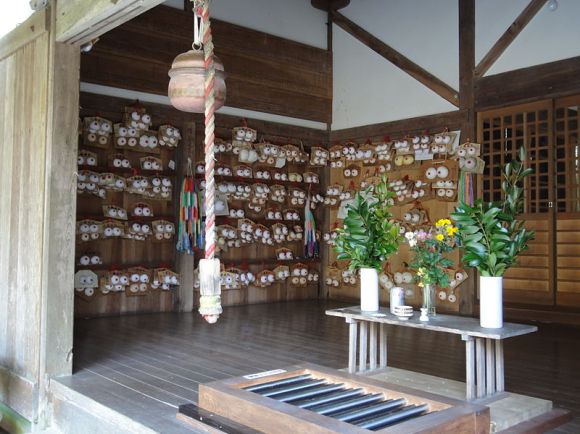
Coming across this Shinto shrine in Soja Okayama by chance you might think you’ve stumbled into a cartoon eye factory. However, this is Karube Shrine, also known as Oppai Jinja or Boobs Shrine.
In this age of rising incidences of breast cancer, a shrine devoted to spiritually protecting everyone’s favorite body part makes sense. But how did the Boobs Shrine come to be over 300 years ago?
Shinto shrines in Japan are all said to enshrine a certain deity or deities. As such if you have a specific thing to pray for like business, school, or romance then there is a certain shrine you should go to for the best results.
Boobs Shrine houses five Shinto gods, yet none of them have anything to do with women’s breasts.
A long time ago, there was a weeping cherry tree – like a cross between a weeping willow and a cherry tree – on the shrine grounds. The tree was named Tarachine Sakura (Hanging Breast Root Cherry Tree) by the local people.
The people also believed that the God of Milk existed in this area. Perhaps it was because of the flowers of the tree during cherry blossom season resembled a fountain of milk. It’s impossible to know now because unfortunately around 1940 the tree died off leaving only a stump that can be seen today.
For a long time the God of Milk was only known to the local people around Soja knew of it. However, Tensai Takeshi No Genki Ga Deru Terebi!!, a variety program from the 80s and 90s, featured Karube Shrine during a segment on unusual temples and shrines.
Since then Boobs Shrine has gotten nationwide recognition and women with breast concerns all over the nation have come to pray for their health.
Shinto Shrines use ema (eh-ma) to make wishes to the gods. An ema is a small wooden board with the worshipper’s wish written on it which is ceremoniously offered to the shrine’s god(s) and hung up.
The God of Milk is not an official Shinto god but ema are often made anyway. A representative from the Soja-Kibiji Chamber of Commerce explains:
“To be precise, the God of Milk isn’t enshrined here. Also, matters involving protection of the breasts are not included in the things typically prayed for here. However, as there were said to be many cases of positive effects of praying here it gained a reputation which attracted many believers. From there the reputation spread to people worried and suffering across the country.”
The wishes to the God of Milk include women with medical issues such as breast cancer and expecting mothers hoping for childbirth and breast-feeding free of complications. As such the ema offered to this god are decorated with a pair of hand-made mammaries – made from either fabric or clay.
And since the God of Milk isn’t an official god of the temple the offering doesn’t have to be done in the traditional way. In fact, the Soja-Kibiji Chamber of Commerce has also set up a long-distance offering kit.
For around 2,000 yen (US$21), you can buy an ema pre-fitted with a pair of boobs delivered to your home. You can write your wish and send it back to the Chamber of Commerce who will offer it up to the God of Milk for you.
These kits are also useful for locals to who just can’t make the time to craft some breasts of their own, and it comes with a sporty teat shaped charm you can keep with you at all times.
In the end we hope everyone puts their faith in medical science rather than the God of Milk when facing serious health issues with their breasts. However, Boobs Shrine can be a fun place to get some extra superstitious protection for your cans if you’re looking for something to do.
In fact, my nipples have been chafing something awful these days. I might just take a jaunt down there for some spiritual healing myself.
Source: MyNavi (Japanese)
Ema Shrine Image: Wikipedia – Novcira
Stump Image: Wikipedia – Novcira
Outside Shrine Image: Wikipedia – Novcira
Ema Kit Image: Soja-Kibiji Chamber of Commerce
▼ From the outside you’d never guess it was full of breasts.

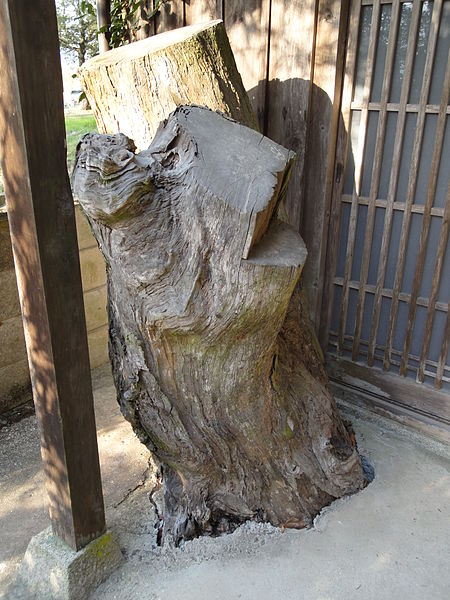
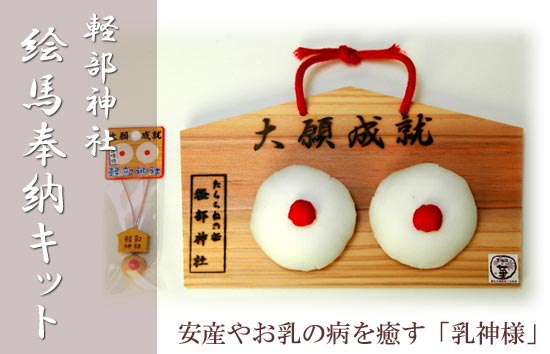
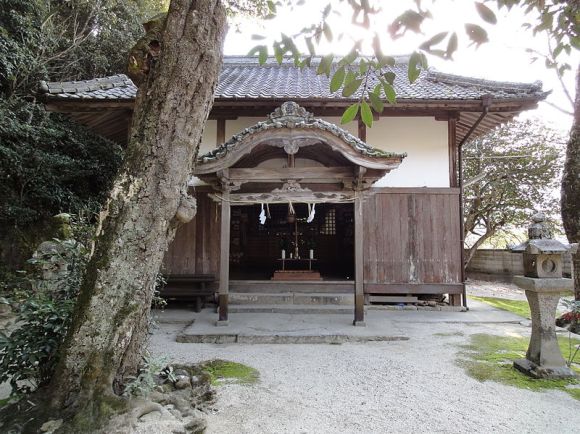
 This Year of the Rabbit, visit some of the best Japanese sightseeing spots related to rabbits
This Year of the Rabbit, visit some of the best Japanese sightseeing spots related to rabbits A visit to Japan’s centuries-old boob temple
A visit to Japan’s centuries-old boob temple Japanese shrine maidens in Osaka spotted wearing unusual costumes during winter
Japanese shrine maidens in Osaka spotted wearing unusual costumes during winter Nipaishin: anime girls with booby cushions are now gracing prayer tablets and travel cards
Nipaishin: anime girls with booby cushions are now gracing prayer tablets and travel cards TripAdvisor Japan announces the country’s 10 favorite shrines and temples
TripAdvisor Japan announces the country’s 10 favorite shrines and temples Red light district sushi restaurant in Tokyo shows us just how wrong we were about it
Red light district sushi restaurant in Tokyo shows us just how wrong we were about it Japan’s massive matcha parfait weighs 6 kilos, contains hidden surprises for anyone who eats it
Japan’s massive matcha parfait weighs 6 kilos, contains hidden surprises for anyone who eats it French Fries Bread in Tokyo’s Shibuya becomes a hit on social media
French Fries Bread in Tokyo’s Shibuya becomes a hit on social media Pokémon Sleep camping suite and guestrooms coming to Tokyo Hyatt along with giant Snorlax burgers
Pokémon Sleep camping suite and guestrooms coming to Tokyo Hyatt along with giant Snorlax burgers Starbucks Japan adds a Motto Frappuccino to the menu for a limited time
Starbucks Japan adds a Motto Frappuccino to the menu for a limited time Akihabara pop-up shop sells goods made by Japanese prison inmates
Akihabara pop-up shop sells goods made by Japanese prison inmates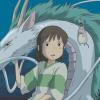 Haku is…Chihiro’s dead brother? Studio Ghibli fans blown away by Spirited Away theory
Haku is…Chihiro’s dead brother? Studio Ghibli fans blown away by Spirited Away theory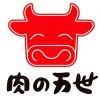 Akihabara’s iconic meat restaurant skyscraper is closing down after 33 years of great meals
Akihabara’s iconic meat restaurant skyscraper is closing down after 33 years of great meals Tokyo Tsukiji fish market site to be redeveloped with 50,000-seat stadium, hotel, shopping center
Tokyo Tsukiji fish market site to be redeveloped with 50,000-seat stadium, hotel, shopping center Beautiful Ghibli sealing wax kits let you create accessories and elegant letter decorations【Pics】
Beautiful Ghibli sealing wax kits let you create accessories and elegant letter decorations【Pics】 McDonald’s new Happy Meals offer up cute and practical Sanrio lifestyle goods
McDonald’s new Happy Meals offer up cute and practical Sanrio lifestyle goods Japanese ramen restaurants under pressure from new yen banknotes
Japanese ramen restaurants under pressure from new yen banknotes All-you-can-drink Starbucks and amazing views part of Tokyo’s new 170 meter-high sky lounge
All-you-can-drink Starbucks and amazing views part of Tokyo’s new 170 meter-high sky lounge Studio Ghibli releases new action figures featuring Nausicaä of the Valley of the Wind characters
Studio Ghibli releases new action figures featuring Nausicaä of the Valley of the Wind characters New private rooms on Tokaido Shinkansen change the way we travel from Tokyo to Kyoto
New private rooms on Tokaido Shinkansen change the way we travel from Tokyo to Kyoto Studio Ghibli glasses cases let anime characters keep an eye on your spectacles
Studio Ghibli glasses cases let anime characters keep an eye on your spectacles Studio Ghibli releases Kiki’s Delivery Service chocolate cake pouches in Japan
Studio Ghibli releases Kiki’s Delivery Service chocolate cake pouches in Japan New definition of “Japanese whiskey” goes into effect to prevent fakes from fooling overseas buyers
New definition of “Japanese whiskey” goes into effect to prevent fakes from fooling overseas buyers Our Japanese reporter visits Costco in the U.S., finds super American and very Japanese things
Our Japanese reporter visits Costco in the U.S., finds super American and very Japanese things Studio Ghibli unveils Mother’s Day gift set that captures the love in My Neighbour Totoro
Studio Ghibli unveils Mother’s Day gift set that captures the love in My Neighbour Totoro New Japanese KitKat flavour stars Sanrio characters, including Hello Kitty
New Japanese KitKat flavour stars Sanrio characters, including Hello Kitty More foreign tourists than ever before in history visited Japan last month
More foreign tourists than ever before in history visited Japan last month New Pokémon cakes let you eat your way through Pikachu and all the Eevee evolutions
New Pokémon cakes let you eat your way through Pikachu and all the Eevee evolutions Sales of Japan’s most convenient train ticket/shopping payment cards suspended indefinitely
Sales of Japan’s most convenient train ticket/shopping payment cards suspended indefinitely Sold-out Studio Ghibli desktop humidifiers are back so Totoro can help you through the dry season
Sold-out Studio Ghibli desktop humidifiers are back so Totoro can help you through the dry season Japanese government to make first change to romanization spelling rules since the 1950s
Japanese government to make first change to romanization spelling rules since the 1950s Ghibli founders Toshio Suzuki and Hayao Miyazaki contribute to Japanese whisky Totoro label design
Ghibli founders Toshio Suzuki and Hayao Miyazaki contribute to Japanese whisky Totoro label design Doraemon found buried at sea as scene from 1993 anime becomes real life【Photos】
Doraemon found buried at sea as scene from 1993 anime becomes real life【Photos】 Tokyo’s most famous Starbucks is closed
Tokyo’s most famous Starbucks is closed One Piece characters’ nationalities revealed, but fans have mixed opinions
One Piece characters’ nationalities revealed, but fans have mixed opinions We asked a Uniqlo employee what four things we should buy and their suggestions didn’t disappoint
We asked a Uniqlo employee what four things we should buy and their suggestions didn’t disappoint Princesses, fruits, and blacksmiths: Study reveals the 30 most unusual family names in Japan
Princesses, fruits, and blacksmiths: Study reveals the 30 most unusual family names in Japan Part of the family – Tokyo Shinto shrine’s blessings for children now available for pets too
Part of the family – Tokyo Shinto shrine’s blessings for children now available for pets too Kyoto’s Shrine of Severing Ties does its job a little too well again…by losing jobs
Kyoto’s Shrine of Severing Ties does its job a little too well again…by losing jobs A visit to one of Japan’s motorcycle Shinto shrines
A visit to one of Japan’s motorcycle Shinto shrines Tsushima no Miya Station: The Japanese train station open only two days a year
Tsushima no Miya Station: The Japanese train station open only two days a year Cute cat finds way to make humans bow down and worship him at Japanese shrine
Cute cat finds way to make humans bow down and worship him at Japanese shrine Dedicate your savings to your oshi of choice with this new buildable offertory box
Dedicate your savings to your oshi of choice with this new buildable offertory box Thank god: New app rewards prayer with free Wi-Fi
Thank god: New app rewards prayer with free Wi-Fi At this Kyoto shrine, be careful what you wish for—and how—, because you just might get it
At this Kyoto shrine, be careful what you wish for—and how—, because you just might get it Chinese zodiac Evangelion characters are here to wish you a happy, chibi Year of the Ox【Pics】
Chinese zodiac Evangelion characters are here to wish you a happy, chibi Year of the Ox【Pics】 Sacred 1,200-year-old tree toppled by severe storm at shrine in central Japan【Photos】
Sacred 1,200-year-old tree toppled by severe storm at shrine in central Japan【Photos】 Flush your prayers down the toilet at this unique Japanese temple
Flush your prayers down the toilet at this unique Japanese temple New ‘Shrine Cafe’ in Tokyo offers fortune-telling and counseling services with your tea
New ‘Shrine Cafe’ in Tokyo offers fortune-telling and counseling services with your tea New hair pins let you look like you’ve been stabbed in the head with a classic Japanese icon
New hair pins let you look like you’ve been stabbed in the head with a classic Japanese icon Draw-your-own fox charms are one of the highlights of Kyoto’s famous Fushimi Inari Shrine
Draw-your-own fox charms are one of the highlights of Kyoto’s famous Fushimi Inari Shrine This Shinto shrine’s gorgeous glass gateways are the only ones of their kind in all Japan【Photos】
This Shinto shrine’s gorgeous glass gateways are the only ones of their kind in all Japan【Photos】 Nara Prefecture’s “god horses” caught acting in a decidedly ungodly manner…【Pics】
Nara Prefecture’s “god horses” caught acting in a decidedly ungodly manner…【Pics】
Leave a Reply